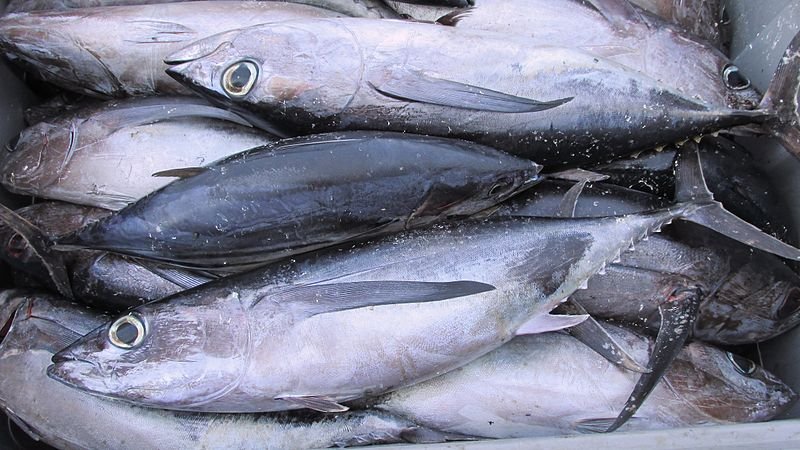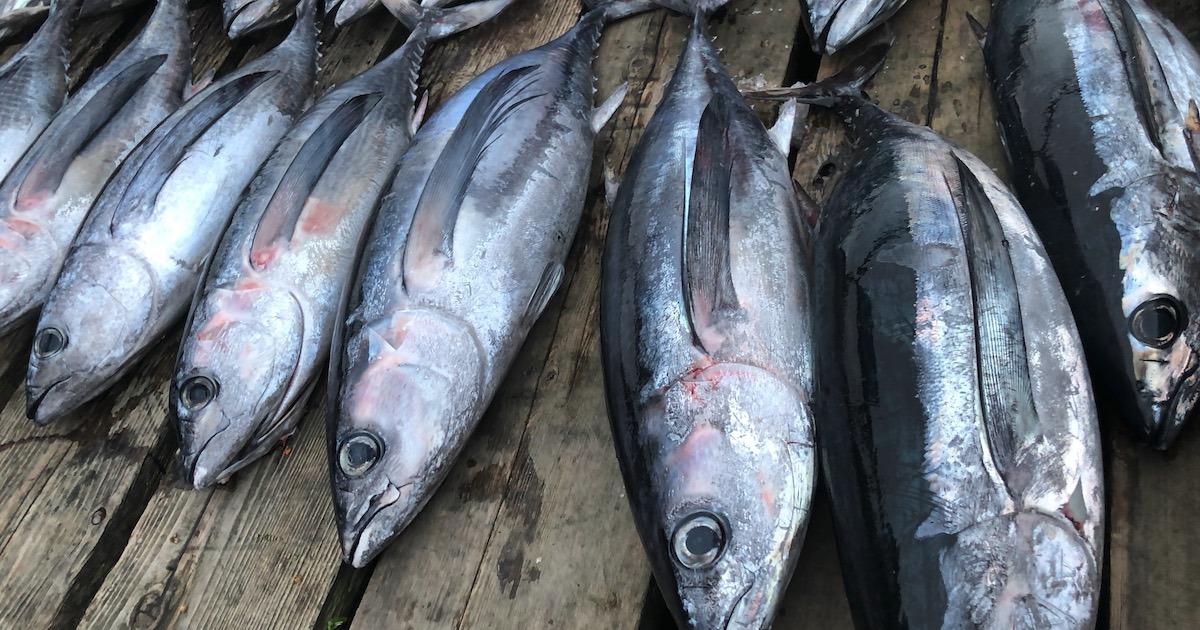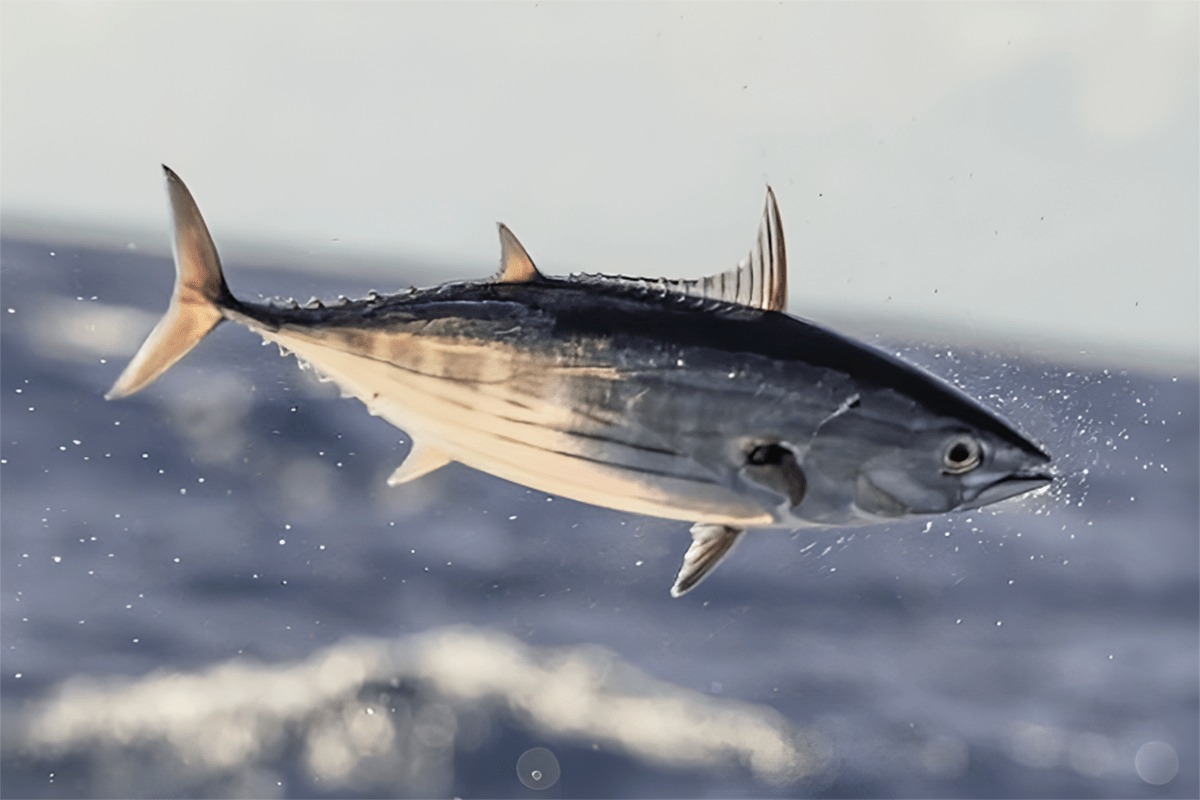Albacore Tuna: A Comprehensive Insight into the Ocean’s Premium Catch
Albacore tuna, known scientifically as Thunnus alalunga, is a highly valued fish species that plays a significant role in both commercial fishing and culinary traditions across the world. Characterized by its mild flavor, firm texture, and high nutritional content, albacore tuna has become a favorite choice for many seafood enthusiasts. This article delves into the essential aspects of albacore, including its biology, habitat, fishing practices, sustainability issues, and its culinary significance.
Overview of Albacore Tuna
Contents

Albacore tuna is a member of the Scombridae family, which also includes other popular tuna species like yellowfin, bluefin, and skipjack. One of the primary distinguishing characteristics of albacore is its long pectoral fins, which give it its name “alalunga,” meaning “long fin” in Latin. These elongated fins help the fish swim efficiently in the open ocean, where they spend the majority of their lives.
This species typically grows to a length of about 4 feet and can weigh anywhere between 25 and 80 pounds, depending on age and habitat conditions. Albacore tuna is known for its fast swimming ability, reaching speeds of up to 50 miles per hour, which is essential for their migratory lifestyle.
Habitat and Migration Patterns
Albacore tuna can be found in all the world’s major oceans, including the Atlantic, Pacific, and Indian Oceans, as well as the Mediterranean Sea. They tend to prefer temperate and tropical waters and are often found in both coastal and offshore environments. While they can be found at depths of up to 500 meters, albacore are generally considered epipelagic, meaning they primarily inhabit the upper layers of the ocean, close to the surface.
The species is highly migratory, traveling vast distances in search of food and favorable breeding grounds. Albacore tuna are known for their extensive migration patterns, with some populations traveling thousands of miles across ocean basins. In the Pacific, for instance, they migrate between the coastal waters of North America and the central Pacific. This migration is largely driven by the seasonal availability of prey and optimal water temperatures.
Diet and Feeding Behavior
Albacore tuna are carnivorous predators, feeding primarily on smaller fish and invertebrates. Their diet consists mainly of squid, mackerel, sardines, and other small pelagic fish. They are opportunistic feeders, meaning they will eat whatever prey is most abundant in their environment.
Albacore tuna utilize their remarkable speed and agility to chase down their prey, often working in schools to increase their chances of success. These hunting tactics make albacore an efficient and highly effective predator in the marine ecosystem.
Fishing and Commercial Importance

Albacore tuna is highly prized in the commercial fishing industry, particularly for its role in the canned tuna market. It is often labeled as “white meat tuna,” distinguished from other varieties like skipjack, which are sold as “light tuna.” The mild, delicate flavor of albacore makes it a preferred choice for high-quality canned tuna products and fresh seafood dishes alike.
Commercial fishing for albacore tuna is conducted using a variety of methods, including longlining, pole-and-line, and purse seining. Longlining involves using a long, baited line with multiple hooks to catch the tuna, while pole-and-line fishing uses traditional fishing rods. Purse seining, on the other hand, involves encircling a school of tuna with a large net, which is then drawn closed like a drawstring.
The global demand for albacore tuna has increased significantly in recent years, driven by the popularity of tuna-based products and the growing recognition of its health benefits. However, the rise in demand has also led to concerns about overfishing and the sustainability of albacore populations.
Sustainability and Conservation Challenges
Sustainability is a critical issue in the albacore tuna industry. Like many other species of tuna, albacore populations have been subject to significant fishing pressure over the past few decades. In some regions, this has led to overfishing, which threatens the long-term viability of the species and the health of marine ecosystems.
Several international organizations, such as the International Seafood Sustainability Foundation (ISSF) and regional fisheries management organizations (RFMOs), have implemented measures to promote the sustainable management of albacore tuna fisheries. These measures include setting catch limits, regulating fishing gear, and monitoring fish stocks to ensure that fishing practices do not deplete the species’ populations.
In addition to regulatory measures, there is a growing emphasis on consumer awareness and sustainable seafood certification programs. For instance, the Marine Stewardship Council (MSC) offers certification to fisheries that meet strict sustainability criteria, allowing consumers to make informed choices about the seafood they purchase. Albacore tuna products that carry the MSC certification are considered a more sustainable option, as they come from fisheries that are managed responsibly and have minimal environmental impact.
Health and Nutritional Benefits
Albacore tuna is renowned not only for its flavor but also for its impressive nutritional profile. It is a rich source of high-quality protein, which is essential for muscle repair and growth. Additionally, albacore tuna is packed with omega-3 fatty acids, which have been shown to promote heart health by reducing inflammation, lowering cholesterol levels, and preventing blood clots.
Omega-3 fatty acids, particularly EPA and DHA, are also known to support brain function and development. Consuming albacore tuna regularly can provide a significant boost to cognitive health, making it an excellent dietary choice for people of all ages.
In addition to omega-3s, albacore tuna is a good source of essential vitamins and minerals, including vitamin D, vitamin B12, selenium, and niacin. These nutrients contribute to overall well-being by supporting immune function, energy metabolism, and bone health.
Culinary Uses of Albacore Tuna

Albacore tuna is a versatile ingredient that can latoto login be prepared in various ways, both raw and cooked. One of the most popular preparations is sushi and sashimi, where the fish is served raw in thin slices, often accompanied by soy sauce and wasabi. Albacore tuna’s firm texture and mild flavor make it a favorite choice for sushi chefs around the world.
When cooked, albacore tuna is often grilled, seared, or broiled. Its meat is lighter in color than other types of tuna, which is why it is referred to as “white tuna” in some markets. Grilling albacore tuna steaks is a common method of preparation, often accompanied by marinades or sauces to enhance its natural flavors.
Albacore tuna is also widely used in canned form, where it is packed in either oil or water. Canned albacore is a popular ingredient in salads, sandwiches, and pasta dishes, providing a quick and convenient source of protein.
The Future of Albacore Tuna
As global demand for seafood continues to rise, the future of albacore tuna will depend largely on how well we can balance the needs of consumers with the health of marine ecosystems. Sustainable fishing practices, responsible consumption, and continued efforts in conservation are crucial to ensuring that future generations can continue to enjoy this valuable resource.
There is a growing trend toward the development of alternative sources of seafood, such as aquaculture and lab-grown fish, which could help reduce the pressure on wild fish populations. However, for now, wild-caught albacore tuna remains a vital part of the global seafood industry, and maintaining the health of these fish stocks should be a priority for all stakeholders involved.
Conclusion
Albacore tuna is more than just a delicious and nutritious food source; it is a species with significant ecological, economic, and cultural importance. From its role in marine ecosystems as a top predator to its place on dinner plates around the world, albacore tuna has earned its reputation as one of the ocean’s most valuable resources.
By understanding the challenges facing albacore tuna, including overfishing and sustainability concerns, consumers and industry leaders alike can work toward ensuring that this remarkable species continues to thrive in the wild. Whether enjoyed raw as sushi, grilled as a steak, or packed in a can, albacore tuna offers a taste of the ocean that can be savored responsibly for generations to come.


















